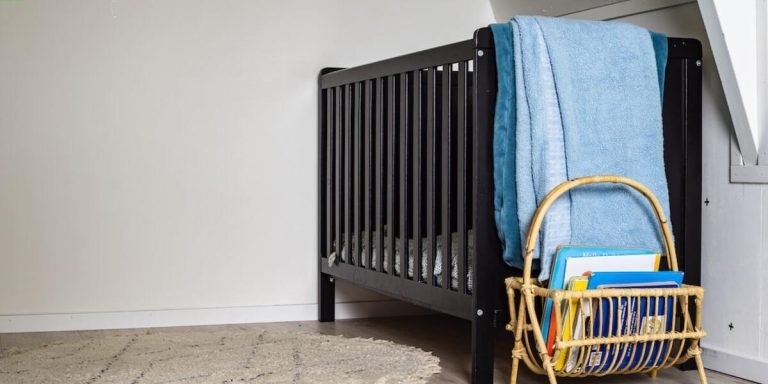Sensory Systems and Their Crucial Role in Childhood Development
Childhood development is a multifaceted phenomenon, and among its many components the sensory systems play an integral role. These powerful biological tools help children explore their surroundings from a very tender age, fostering curiosity, comprehension skills and cognitive growth simultaneously. Understanding how these sensory systems work can equip parents as well educators with valuable insights to enhance the learning arc of every child’s early developmental stages.
Specifically for children who need special education resources and support, acknowledging the function of sensory systems becomes even more paramount. Their unique schooling requirements often entail tailored pedagogical strategies that resonate with their specific neurological architecture. By exploring this topic further we aim to educate caregivers about creating favorable environments where young learners can thrive using all their senses effectively.
Did you know?
Various scientific studies confirm that infants as young as two months old can integrate sight and sound together, enhancing their sensory development. One such study appeared in the journal “Developmental Science.”
Understanding Sensory Systems in Special Education
Sensory systems play a critical role in special education, particularly as these systems form the very foundation of how children with special needs perceive and interact with their surroundings. In our modern era, marked by unprecedented advancements in technology, integrating technological tools into special educational resources and support is transforming approaches to sensory learning.
There’s an increasing emphasis on using assistive technologies designed specifically for aiding children with different kinds of sensory challenges. These innovative tech solutions are proving instrumental in strengthening their ability to process auditory or visual information more effectively.
For instance, interactive whiteboards and computer games have emerged as powerful tools to enhance visual processing skills among youngsters facing difficulty in this area. Meanwhile, various types of digital audio devices such as hearing aids integrated with Bluetooth features offer significant improvements over traditional models when it comes to addressing auditory impairments.
Moreover though carefully calibrated modifications introduced through accessible designs along conceptual lines known as ‘universal design,’ even common classroom objects become transformed into meaningful facilitators helping students traverse complex paths towards academic success despite any hurdles posed by their respective conditions impacting sensory abilities.
The Role of Sensory Integration in Learning
“Sensory systems play a crucial role in the learning process, particularly for students with special educational needs. Sensory integration is at the heart of how we learn and interpret the world around us. Every piece of information that enters our brain – every sight, sound, touch or taste – has to be processed by these systems.
In special education contexts, understanding and fostering sensory integration can significantly enhance learners’ experiences and outcomes. When children struggle with processing sensory inputs (a common occurrence among those with neurodiverse conditions), it can severely impact their ability to focus, concentrate and absorb new material.
Technology offers promising avenues for supporting kids in this regard. Devices such as iPads loaded with custom apps designed specifically for youngsters struggling with sensory processing disorders could provide tailored support during classroom activities without drawing attention to them negatively.
Further advancements have seen creation of interactive whiteboards which foster engagement while catering different types on learners including visual ones who benefit from graphics while auditory learner benefits from spoken instructions via speakers integrated into boards themselves.
Identifying Signs of Sensory Processing Disorders
Recognizing sensory processing disorders in childhood can significantly help educators and parents provide better support for special needs students. Many children have unique ways of interacting with the world around them, especially those who deal with differences in their sensory systems. Here’s how you can identify signs of these disorders.
Firstly, be aware of unusual responses to touch or texture. Children with sensory processing issues may seem overly sensitive or under-responsive to different textures they encounter daily. This could manifest as discomfort wearing certain types of clothes or eating particular foods due to their texture.
Finally,some children exhibit strong aversions towards visually stimulating environment.It could range from refusing read brightly colored books avoiding busy playgrounds .
Strategies for Supporting Students with Sensory Challenges
Educators today face the challenging task of developing strategies to support students with sensory challenges in the classroom. In this digital age where technology and education continuously intertwine, it’s crucial that we utilize technological resources effectively to aid these students and amplify their learning experiences. Most importantly, understanding a student’s unique “sensory systems” is at the core of creating an inclusive environment for them.
These “sensory systems,” including visual, auditory or tactile senses play pivotal roles in how children learn and interpret their surroundings. By integrating assistive technologies into our teaching methods tailored towards these sensory needs can remarkably boost a child’s engagement, comprehension levels while ensuring inclusivity inside classrooms.
For example, haptic devices (touch-based tech) can be used for enhancing tactile learners’ academic experience by providing tangible feedback during lessons. Similarly audioscript apps help auditory learners by converting spoken words into written text instantly which they read along simultaneously improving both listening & reading skills without compromising on comfort level. The list goes on but what matters most is using such advancements intentionally aligning it closely with individual learner`s specific need areas making special education more customised than ever before.
Implementing Multi-Sensory Teaching Approaches
For children with sensory challenges, multi-sensory teaching offers a holistic approach to learning. This methodology involves the use of multiple “sensory systems” simultaneously for more effective education. The integration of technology within this framework has shown significant improvements in student engagement and success levels.
One such advancement is Virtual Reality (VR). VR applications offer sensory-rich environments where students can learn through touch, sight, and sound simultaneously; hence meeting their unique needs better than traditional methods. For example, youngsters grappling with arithmetic might find it easier when they physically interact with number blocks within the VR space rather than simply read numbers off a text-book.
Another resourceful tool includes adaptive software programs that customize content based on each learner’s specific needs – be it visual aids or interactive audio materials. These tools work wonders by constantly adapting to provide an optimal studying environment while making sure no child feels left out due to their distinctive sensory requirements.
Audio-visual e-books are yet another revolutionary feature tech-adoption brought into classrooms worldwide wherein lessons come alive via engaging animations along with suitable voiceovers explaining concepts lucidly at adaptable paces as per individual capabilities.
Also worth noting is haptic technology’s relevance perfectly fitting into tactile learners’ wheelhouse—those who learn best through physical activities like building things or conducting experiments hands-on now have tech-based substitutes ensuring zero compromise on quality!
Creating an Inclusive Classroom Environment
Creating an inclusive classroom environment is a critical undertaking that needs unwavering commitment from teachers, parents, and specialized education experts. In today’s digital era where technology plays an integral role in the progress of every industry including education, it provides numerous opportunities to make learning more accessible for students with sensory challenges.
For instance, assistive technology tools such as speech recognition apps or text-to-speech software aid children who have problems with reading or writing due to dyspraxia. Digital visual aids like enlarged fonts on iPads or electronic whiteboards are useful too for visually impaired students; they allow them to access materials easily during lessons thus fostering inclusivity within the shared educational space.
Moreover incorporating adaptive hardware like Braille embossers into everyday curriculums provide blind youngsters hands-on approach towards understanding complex information while tactile picture books encourage disabled preschoolers’ love for stories thereby enhancing early literacy skills.
In fact even smart classrooms equipped with multi-touch interactive tables capitalize on all available sensory channels; this not only suits different types of learners but also stimulates group participation promoting social interaction among peers regardless physical limitations.
Evaluating and Utilizing Assistive Technology
In the current era, technology integration in education has taken a significant leap forward with sensory systems leading this revolution. One prominent aspect of it is Assistive Technology (AT), which helps to bridge critical gaps for children with unique learning needs or disabilities. By developing and benefitting from these interactive tools, educators are better equipped to tailor their teaching methods to cater more effectively towards each child’s specific development goals.
Assessing and deploying assistive tech goes beyond merely using sophisticated devices; instead, it involves understanding how such tools can contribute significantly in enhancing sensory input among youngsters. These advanced education technologies stimulate distinct senses – hearing, touch, sight etc., thereby fostering comprehensive growth patterns in learners that exceeds conventional instructional environments.
Moreover, through AT specialists have a valuable resource at hand catering not just for cognitive stimuli but emotional responsiveness as well depending upon individual learner’s receptive abilities. Such proactive adaptations hold immense promise for special educational resources support as they navigate complexities inherent within various spectrums of challenges faced by some students.
The keys lie not only on proficient evaluation methodologies but also active utilization strategies ensuring maximal benefits drawn out from contemporary breakthroughs like sensory system-focused assistive technology on every step along today’s progressive childhood educational journey.
Selecting Appropriate Sensory Tools for Individual Needs
Navigating the world of assistive technology for education can be a daunting task, particularly when it comes to choosing tools that support sensory systems. However, with guided understanding, selecting appropriate sensory tools tailored to individual needs doesn’t have to be challenging.
Firstly, it’s crucial for parents and educators alike to understand what exactly we mean by ‘sensory systems.’ These are biological structures in our bodies that interpret information from our environment—things like sight or sound—and translate them into responses.
Assistive tech ranges include items such as weighted blankets comforting touch-sensitive students; fidget toys enhancing focus through tactile stimulation; noise-canceling headphones controlling auditory overload- just name a few examples. These serve not only learners with diagnosed disorders but also those simply needing additional help maintaining an optimal state of alertness throughout school day 2023.
Selecting these vital tools requires careful evaluation. Take time examining child’s specific experiencing difficulties: Is there an issue balancing? Are they sensitive loud noises?
Do textures make uncomfortable? All questions guide towards ideal tool meet their requirements fulfilling set objectives outlined IEP (Individual Education Plan).
Next actions involve setting realistic goals linked student outcomes then testing various devices observing impact motivational levels within academic context confirming effectiveness noted aid.
Integrating Technology to Enhance Sensory Learning Experiences
Sensory systems play a crucial role in the learning journey of children, especially those who require special education resources and support. Like everyone else, these youngsters also have the right to learn and grow in an environment that takes into account their unique needs.
Technology integration offers fantastic opportunities for enhancing sensory experiences during teaching sessions. Let’s discuss how technology can be evaluated and utilized effectively for this purpose.
Firstly, understand your students’ specific requirements is essential when considering which technologies will best enhance sensory stimulation. Some may respond better to auditory stimulants like sounds or songs; others might prefer visual cues such as colors or movements on a screen. Comprehensive evaluation helps you identify what type of stimuli works best with each student.
Furthermore, utilizing educational software designed specifically around making learning more accessible can prove immensely helpful when creating tailored lesson plans catering towards different abilities constraints present among students needing additional aid – examples include reading aids adjusted speed accentuation matching user’s pace comprehension level text-to-speech converters aiding those struggling read traditional print media etcetera!
Conclusion
In the circle of childhood development, sensory systems are truly undisputed champions. They form the bedrock upon which children explore their world, learn new things and eventually grow into well-rounded individuals. From distinguishing colors to deciphering sounds or comprehending textures – every interaction a child has with his surroundings is steered by these incredible systems.
As parents and educators vested in nurturing an enriching environment for our little ones, understanding how sensory systems operate transforms us from mere spectators to active participants in their journey of growth. With this newfound insight at your fingertips, we invite you to discover more invaluable resources on holistic child education that awaits you across various sections of our website. Your role in shaping tomorrow’s leaders begins here!







